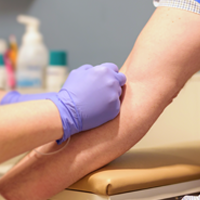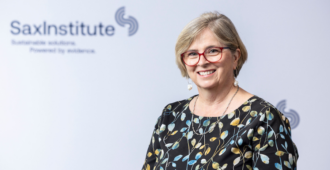
Why do some people lead healthy lives into their 70s and beyond, while others develop debilitating conditions such as cancer, heart disease or dementia? The Sax Institute’s 45 and Up Study is involved in a groundbreaking initiative that may go some way towards answering the genetic component of this question by teasing out genetic factors involved in healthy ageing.
The Medical Genome Reference Bank (MGRB) is a collection of whole genome sequences from healthy older people using blood samples from participants of the 45 and Up Study – one of the world’s largest longitudinal studies of healthy ageing – and Monash University’s ASPREE study. It is a world-leading, large-scale database developed to analyse the genomes of older people free of cancer, heart disease or neurodegenerative diseases before the age of 70. The MGRB can act as a healthy control for researchers trying to uncover genetic factors involved in common non-communicable diseases.
A new paper in the prestigious journal Nature Communications analyses the first 2,570 genomes from the MGRB, which will contain over 4,000 genomes from older Australians once it is complete.

Senior author Professor David Thomas, Director of the Kinghorn Cancer Centre at the Garvan Institute, says this first release of data from the Medical Genome Reference Bank gives genetics researchers a more statistically powerful framework to identify new disease-causing variants than they have had in the past.
“For instance, when we analysed genomes of prostate cancer patients, we found that using the MGRB as a ‘control’ gave us a 25% higher predictive power of disease-linked gene variants than another genome database that is commonly used by researchers to find such variants.”
One intriguing finding involves genetic changes associated with biological ageing, providing insights into why people born in the same era often appear to age at different speeds.
“We were able to detect changes in the genomes that could distinguish between healthy older individuals that share the same age, but have different levels of physical function. This indicates that the DNA in an individual’s blood sample may provide a better indicator of their ‘biological age’ than their chronological age,” says Professor Thomas.
Dr Martin McNamara, deputy CEO of the Sax Institute and co-author of the new paper, says that understanding the genetics of healthy ageing has the potential to make a significant contribution to good health outcomes as our population continues to age.
“Combining the rich information provided by 45 and Up Study participants with genetic information has great potential to help us understand how to prevent, diagnose and treat disease. I’m proud of the Sax Institute’s involvement in this project and it is an excellent example of the 45 and Up Study’s contribution to innovative research in healthy ageing.”
Dr McNamara points out that this is not the Sax Institute’s only foray into genomics and that there is much more to come.
“We’re involved in a UTS-led initiative called OUTBREAK, which will tackle antimicrobial resistance by predicting outbreaks using artificial intelligence. The 45 and Up Study is at the core of this project, as 1500 45 and Up participants are being invited to provide faecal samples. Bacteria from those samples will be whole-genome sequenced and combined with other data to develop a surveillance model for antimicrobial resistance in New South Wales.”
Dr McNamara says the Sax Institute has a major plan – currently at the pilot phase – to build a largescale collection of blood samples from 45 and Up Study participants.
“The collection will be used not just for whole genome sequencing but also to look for early markers of common chronic conditions like cancer, heart disease or certain neurological disorders. And it will drive the development of new interventions and screening processes to identify people at risk,” Dr McNamara explains.
“The project has already garnered huge interest in the research community and we’re excited about what it can achieve.”
Access the research paper here.
Learn more about the 45 and Up Study here.





